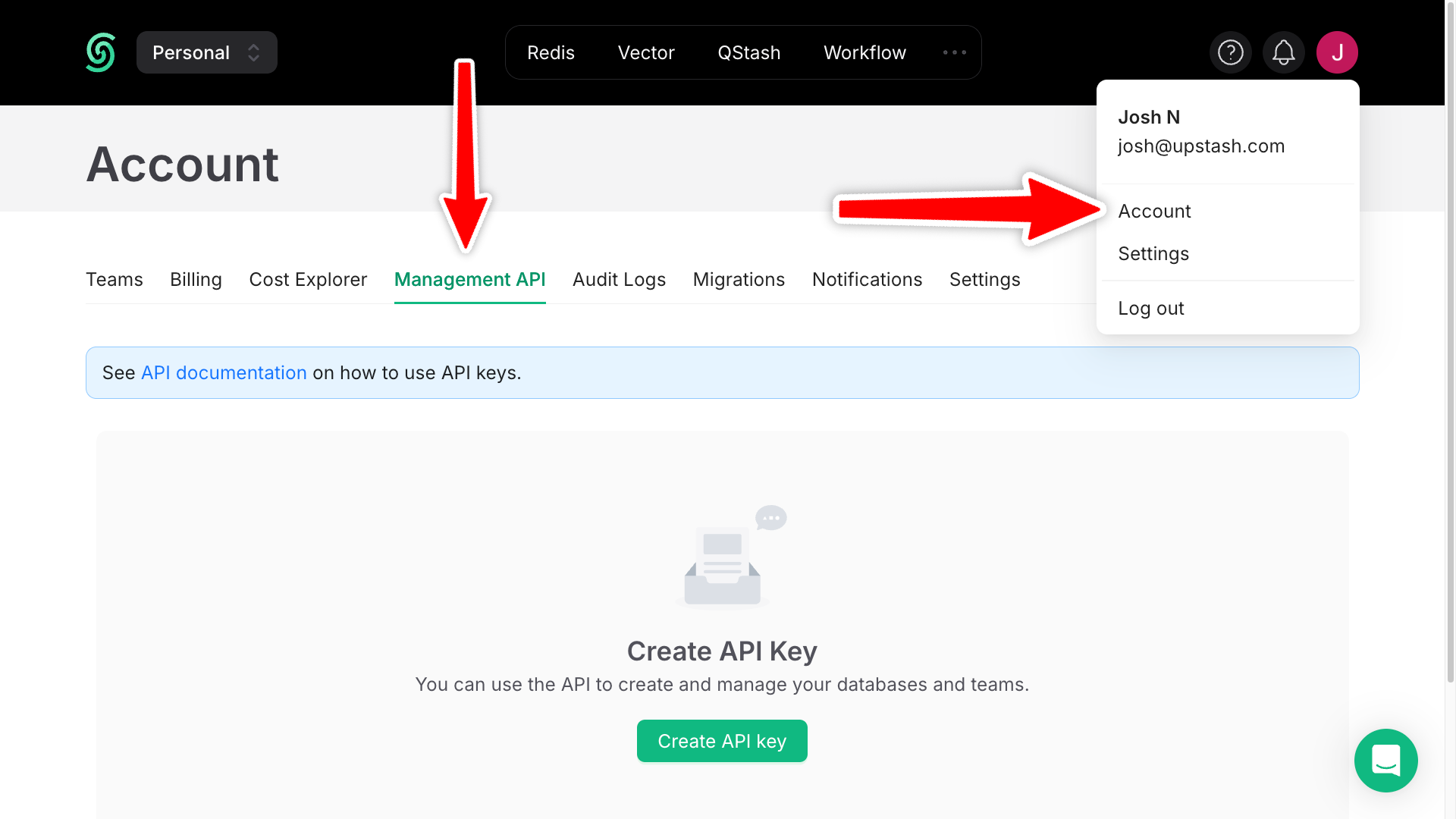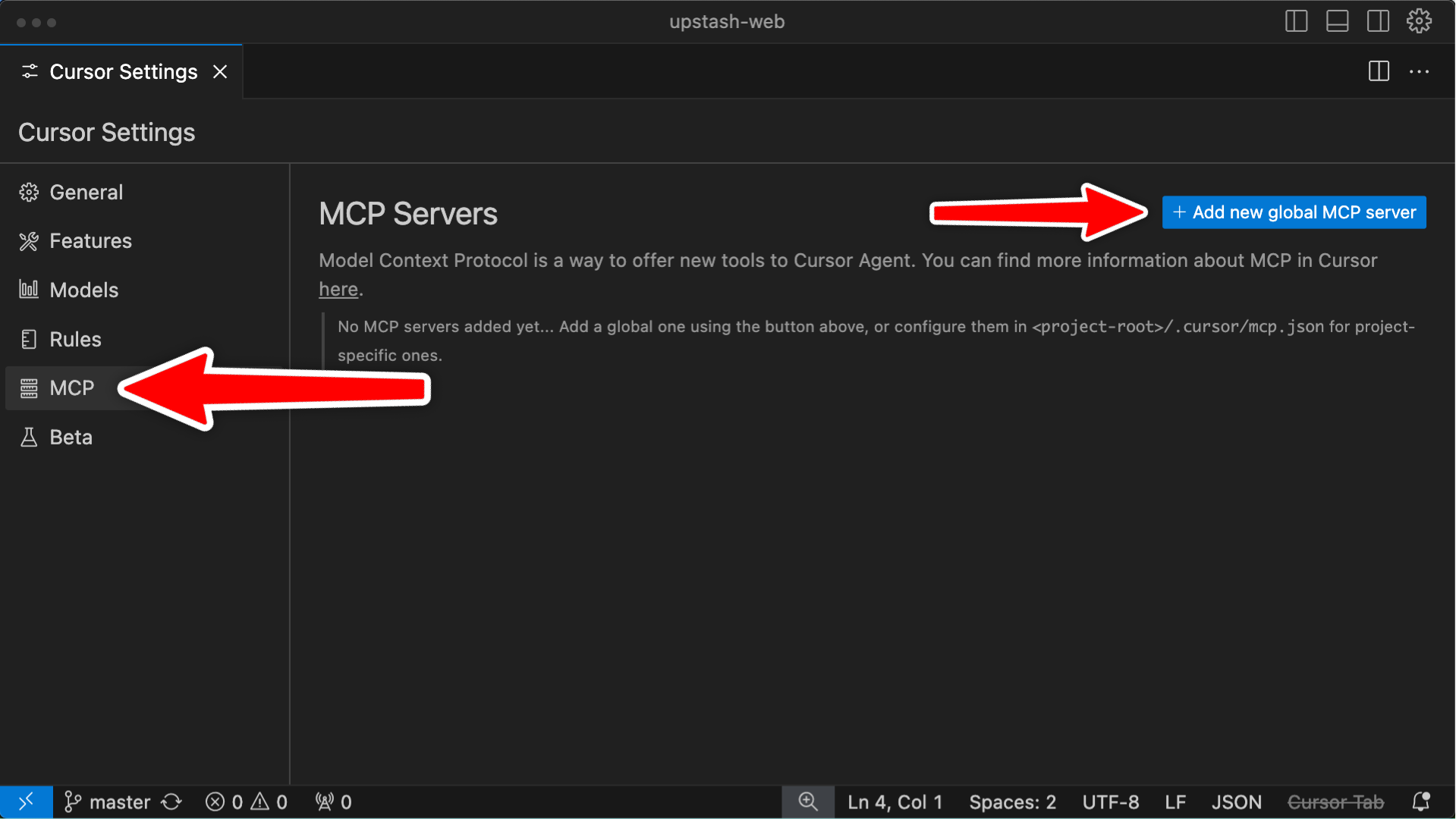- “Create a new Redis database in us-east-1”
- “List my databases”
- “Show all keys starting with “user:” in my users-db”
- “Create a backup”
- “Show me the throughput spikes for the last 7 days”
Quickstart
Step 1: Get your API Key
- Go to
Account > Management API > Create API keyand create an API key.
- Note down your
<UPSTASH_EMAIL>and<UPSTASH_API_KEY>.
Step 2: Locate mcp.json
- Cursor: Navigate to
Cursor Settings > Features > MCPand click+ Add new global MCP server. This will open themcp.jsonfile.
- Claude: Navigate to
Settings > Developerand clickEdit Config. This will open theclaude_desktop_config.jsonfile. Refer to the MCP documentation for more details. - Copilot: Create a
.vscode/mcp.jsonfile in your workspace directory. For Copilot, first update themcp.jsonfile as described in the next step on this page, then follow the Copilot documentation (starting from step 2) to configure MCP servers in VS Code Chat.
Step 3: Configure the MCP File
There are two transport modes for MCP servers:stdio and sse.
- Stdio: Best for local development. The server runs locally, and the client connects directly to it.
- SSE: Designed for server deployments. However, since clients don’t yet support SSE connections with all the features we need, you need a proxy server. The proxy acts as a
stdioserver for the client and communicates with the SSE server in the background.
Option 1: Stdio Server
Add the following configuration to your MCP file:Option 2: SSE Server with Proxy
SSE (Server-Sent Events) is the next stage in MCP transport modes afterstdio. It is designed for server deployments and will eventually be followed by an HTTP-based transport mode. However, since clients currently do not support direct connections to SSE servers, we use a proxy to bridge the gap.
The proxy, powered by supergateway, acts as a stdio server locally while communicating with the SSE server in the background. This allows you to use the SSE server seamlessly with your client.
Add the following configuration to your mcp.json file:
Step 4: Use MCP with Your Client
Once your MCP is configured, your client can now interact with the MCP server for tasks like:- Seeding data
- Querying databases
- Creating new databases
- Managing backups
- Analyzing performance metrics

